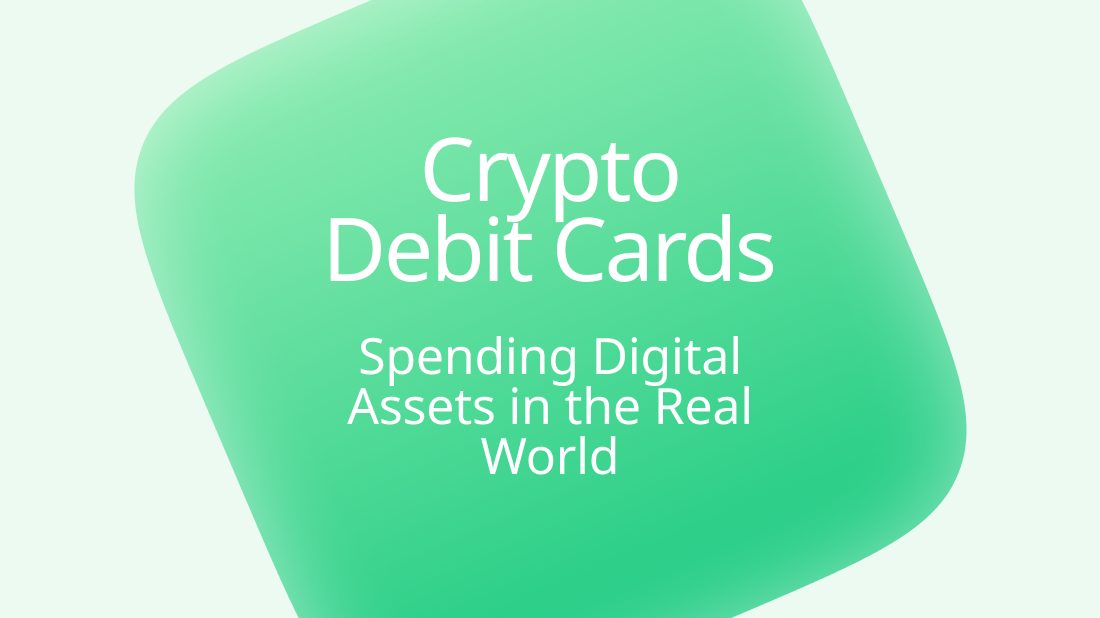The Evolution of Crypto Exchanges: From Centralized to Decentralized

The world of cryptocurrency has seen dramatic growth since the inception of Bitcoin in 2009. Alongside this growth, cryptocurrency exchanges have evolved, adapting to the needs of a rapidly changing market. The evolution of crypto exchanges from centralized models to decentralized platforms marks a significant shift in how digital assets are traded, managed, and stored. This transformation reflects the broader trends within the blockchain and crypto space, emphasizing security, transparency, and user control.
In this article, we will trace the evolution of cryptocurrency exchanges, comparing centralized and decentralized models, and explore their respective advantages and challenges. By understanding these dynamics, readers can gain valuable insights into the future of blockchain platforms and digital asset trading.
The Rise of Centralized Crypto Exchanges
Early Days of Cryptocurrency Trading
In the early days of cryptocurrency, trading was a niche activity, often conducted through informal channels like online forums or direct peer-to-peer transactions. As interest in Bitcoin and other cryptocurrencies grew, the need for more formal trading platforms became apparent. This led to the creation of the first centralized cryptocurrency exchanges, which provided a more structured environment for buying, selling, and storing digital assets.
Centralized Exchanges (CEXs)
Centralized exchanges (CEXs) quickly became the dominant model for cryptocurrency trading. These platforms operate much like traditional stock exchanges, where users create accounts, deposit funds, and trade cryptocurrencies through the exchange's order book. Centralized exchanges act as intermediaries, managing users' funds, executing trades, and providing liquidity.
Key Features of Centralized Exchanges
- User-Friendly Interface: Centralized exchanges typically offer user-friendly interfaces, making it easy for newcomers to navigate the platform and execute trades. This accessibility has contributed to their widespread adoption.
- Liquidity: CEXs often have high trading volumes, providing deep liquidity for popular cryptocurrencies. This allows traders to execute large orders with minimal price slippage.
- Customer Support: Centralized exchanges usually offer customer support services, helping users resolve issues related to account access, deposits, withdrawals, and trading.
- Advanced Trading Tools: Many CEXs offer advanced trading tools, such as margin trading, futures contracts, and staking options, catering to both novice and experienced traders.
Challenges of Centralized Exchanges
Despite their popularity, centralized exchanges are not without their challenges:
- Security Risks: Centralized exchanges are prime targets for hackers due to the large amounts of cryptocurrency they hold. High-profile hacks, such as the Mt. Gox incident in 2014, have resulted in the loss of millions of dollars' worth of digital assets.
- Lack of User Control: On a CEX, users do not have direct control over their private keys. This means that if the exchange is compromised, users' funds can be at risk.
- Regulatory Pressure: Centralized exchanges are subject to regulatory scrutiny, which can lead to restrictions on trading, mandatory Know Your Customer (KYC) procedures, and, in some cases, the shutdown of the exchange.
- Centralization: The centralized nature of these exchanges contradicts the decentralized ethos of blockchain technology. This has led to criticism from within the crypto community, with many arguing that centralized exchanges undermine the principles of decentralization and user sovereignty.
The Emergence of Decentralized Exchanges (DEXs)
What Are Decentralized Exchanges?
In response to the limitations of centralized exchanges, decentralized exchanges (DEXs) began to emerge. Unlike CEXs, decentralized exchanges operate without a central authority. Instead, they leverage blockchain technology and smart contracts to facilitate peer-to-peer trading directly between users.
Key Features of Decentralized Exchanges
- Trustless Transactions: DEXs allow users to trade cryptocurrencies without the need to trust a central entity. Trades are executed directly on the blockchain through smart contracts, ensuring that users retain control of their private keys.
- Privacy: Decentralized exchanges typically do not require users to undergo KYC procedures, offering a higher level of privacy compared to centralized platforms.
- Censorship Resistance: Because DEXs are not controlled by a central authority, they are less susceptible to censorship and regulatory pressure. This makes them an attractive option for users in regions with strict financial regulations.
- Global Accessibility: DEXs are accessible to anyone with an internet connection and a cryptocurrency wallet, enabling global participation in the crypto market without geographic restrictions.
The Rise of Automated Market Makers (AMMs)
One of the most significant innovations in the DEX space is the development of Automated Market Makers (AMMs). Unlike traditional order book models, AMMs use liquidity pools to facilitate trades. Users can provide liquidity to these pools and earn fees in return. Popular AMM-based DEXs include Uniswap, SushiSwap, and PancakeSwap.
How AMMs Work
In an AMM, liquidity providers (LPs) deposit pairs of tokens into a smart contract. These tokens are then used to create a liquidity pool, which traders can access to execute trades. The price of tokens in the pool is determined by an algorithm based on the ratio of the tokens in the pool. This model eliminates the need for a traditional order book and allows for continuous trading, even in low-liquidity environments.
Challenges of Decentralized Exchanges
While decentralized exchanges offer many benefits, they also face several challenges:
- Liquidity: Many DEXs struggle with liquidity, especially for less popular tokens. This can result in higher price slippage and less efficient trading compared to centralized exchanges.
- User Experience: DEXs are often more complex to use than centralized exchanges, with less intuitive interfaces and a steeper learning curve for new users.
- Smart Contract Vulnerabilities: DEXs rely heavily on smart contracts, which can be susceptible to bugs and vulnerabilities. If a smart contract is compromised, it can lead to the loss of funds for users.
- Scalability: Decentralized exchanges operate on blockchain networks, which can face scalability issues. High transaction volumes can lead to network congestion and increased transaction fees, particularly on networks like Ethereum.
The Hybrid Model: Combining the Best of Both Worlds
As the cryptocurrency market continues to evolve, a new breed of exchanges has emerged that seeks to combine the best features of both centralized and decentralized models. These hybrid exchanges aim to offer the security and control of decentralized exchanges while maintaining the liquidity and user experience of centralized platforms.
Key Features of Hybrid Exchanges
- Custodial and Non-Custodial Options: Hybrid exchanges may offer both custodial (centralized) and non-custodial (decentralized) trading options, allowing users to choose the level of control and security they prefer.
- Cross-Chain Trading: Some hybrid exchanges facilitate cross-chain trading, enabling users to trade assets across different blockchain networks without needing to move their funds between exchanges.
- Enhanced Security: By leveraging decentralized elements like smart contracts and multi-signature wallets, hybrid exchanges aim to offer enhanced security while maintaining the liquidity and ease of use of centralized platforms.
- Regulatory Compliance: Hybrid exchanges may implement regulatory compliance features, such as optional KYC processes, to meet the needs of users in different jurisdictions while preserving privacy for those who value it.
The Future of Crypto Exchanges
The evolution of crypto exchanges is a testament to the rapid innovation in the blockchain and cryptocurrency space. As technology advances, we can expect to see further developments in both centralized and decentralized exchanges, with a focus on improving security, scalability, and user experience.
The Role of Regulation
Regulation will continue to play a significant role in shaping the future of crypto exchanges. While decentralized exchanges offer resistance to censorship and regulatory pressures, centralized exchanges will likely face increased scrutiny as governments seek to regulate the growing crypto market. This could lead to a more defined regulatory framework for hybrid exchanges, which balance decentralization with compliance.
Interoperability and Cross-Chain Solutions
Interoperability will be a key focus area as the crypto ecosystem matures. Cross-chain solutions that enable seamless trading across different blockchain networks will become increasingly important, as users seek more flexibility and efficiency in managing their digital assets.
Mainstream Adoption
As crypto exchanges continue to evolve, they will play a crucial role in driving mainstream adoption of digital assets. User-friendly interfaces, robust security measures, and regulatory compliance will be essential in attracting new users to the crypto space.
Conclusion
The evolution of cryptocurrency exchanges from centralized to decentralized models reflects the broader trends within the blockchain industry. While centralized exchanges offer liquidity, ease of use, and advanced trading tools, they come with security risks and regulatory challenges. Decentralized exchanges, on the other hand, offer greater control, privacy, and resistance to censorship but face challenges related to liquidity, user experience, and scalability.
Hybrid exchanges represent an exciting new development, combining the best features of both centralized and decentralized models. As the crypto market continues to grow, the future of exchanges will likely involve a blend of these approaches, driven by innovation, regulation, and the evolving needs of users. Whether centralized, decentralized, or hybrid, crypto exchanges will remain at the heart of the digital asset economy, facilitating the trade and management of digital assets in an increasingly interconnected world.











